-
Embark on a 15-day journey to the base of the highest mountain in the world! Tour the historical capital of Kathmandu and experience the wonders of Nepalese architecture and cuisine. Then, with Mount Everest’s rugged ridges firmly in sight, make your way through the lush forests and valleys of the Himalayas, get a taste of mountain life in colorful Sherpa villages, and marvel at the mysteries of ancient temples and monasteries. Local tea houses will replenish your strength as the jaw-dropping panoramas lead you to the Everest Base Camp at 5,364 meters (17,600 ft).
-
Your guides will come pick you up from the Tribhuvan International Airport and take you to your hotel in Kathmandu (1,300m/ 4,264 ft). Freshen up and head to the finest Nepalese restaurant in the city to meet up with your group. Go through a briefing about the trip and then return to the hotel.

-
Tour the UNESCO world heritage sites in Kathmandu. You’ll visit important places for Buddhist and Hindu rituals and ceremonies, such as the Pashupatinath Temple, Boudhanath, Swayambhunath, and Kathmandu Durbar Square. These historical sights boast numerous works of art and they portray the ancient history of Nepal. You’ll also visit many smaller temples and spend the day wandering around Kathmandu. Return to the hotel and pack your bag with appropriate equipment for the upcoming days.
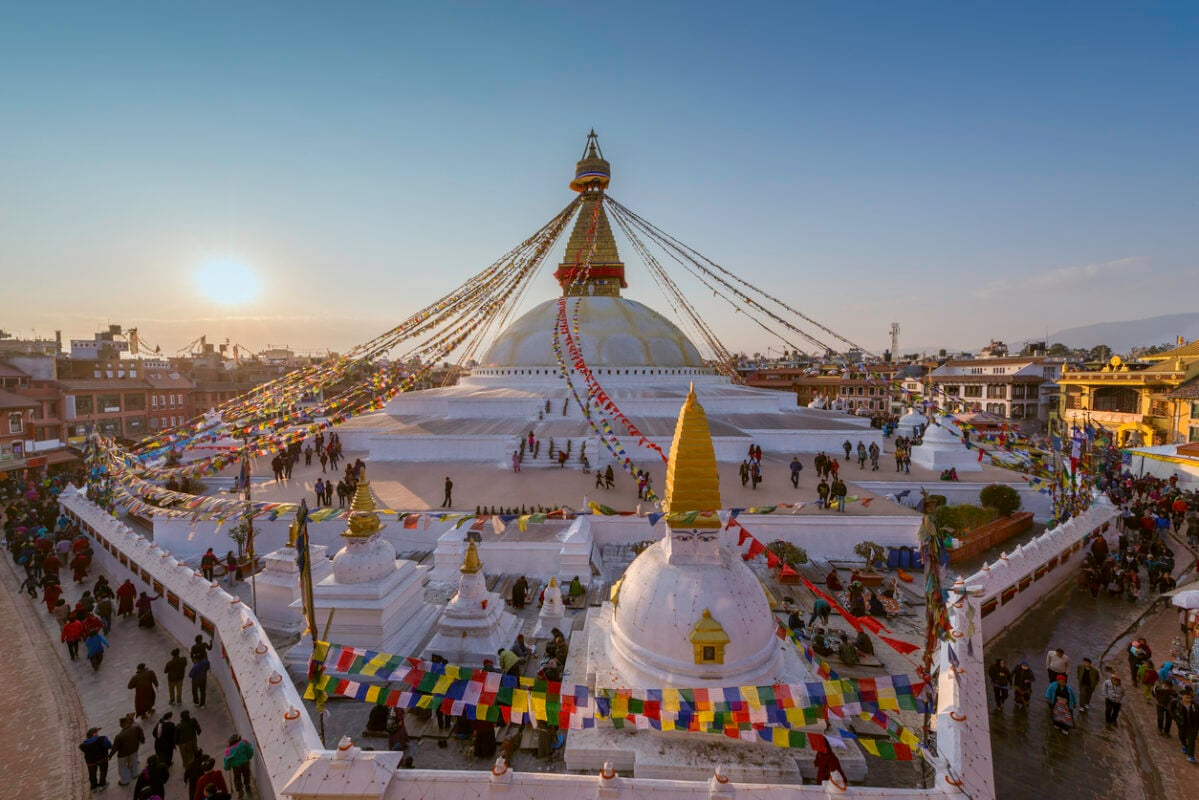
-
Fly from Kathmandu to Lukla (2,800m/ 9,186 ft) and enjoy the views as you land on a small strip atop a hill. Trek from Lukla through the Cheplung village, enjoying the sight of Mount Khumbila, considered to be home to the patron God of the local area. As you reach Phakding (2,651m/ 8,700 ft), you’ll get a sense of the place’s popularity, as it has numerous lodges and tea houses welcoming guests. Stay there for the night and take in the view of the mighty Kusum Kangkaru, which means “Tree Snow-White Gods.”
Flying: 30 min
Trekking: 3-4 hours
-
Continue trekking ahead and cross the Dudh Koshi river several times by suspension bridges as you pass through the Sherpa villages of Tok Tok, Benkar, and Monjo, where the Sagarmatha National Park area begins. Your guides will take care of all the required formalities at the entrance. Passing through Jorsalle, you’ll gradually ascend the valley to the foot of the steep climb to Namche Bazaar. Halfway up the climb, you might catch a glimpse of Mt. Everest, Mt. Nuptse, and Mt. Lhotse. You’ll reach Namche Bazaar (3,438m/ 11,280 ft), the land of Sherpas, where you’ll spend the night.
Trekking: 5-6 hours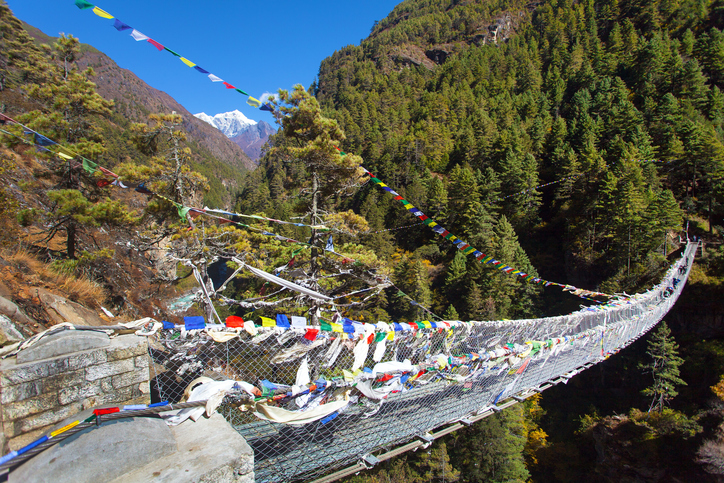
-
You’ll go for an acclimatization hike in the morning, ascending out of Namche, past the world’s highest airstrip at Syangboche, to the Everest View Hotel. Marvel at the highest peaks on Earth as you sip on your tea: Mt. Everest, Mt. Lhotse, Mt. Nuptse, Mt. Thamserku, Ama Dablam, and many other Himalayan giants. Start descending through the Syangboche airstrip to the National Park, where there’s a statue of Tenzing Norgay, the first person to reach the summit of Mt. Everest along with Edmund Hillary. After you’ve explored the Sherpa museum, return to Namche Bazaar and visit its ancient monasteries. You’ll stay at Namche Bazaar for the night.
Trekking: 3-4 hours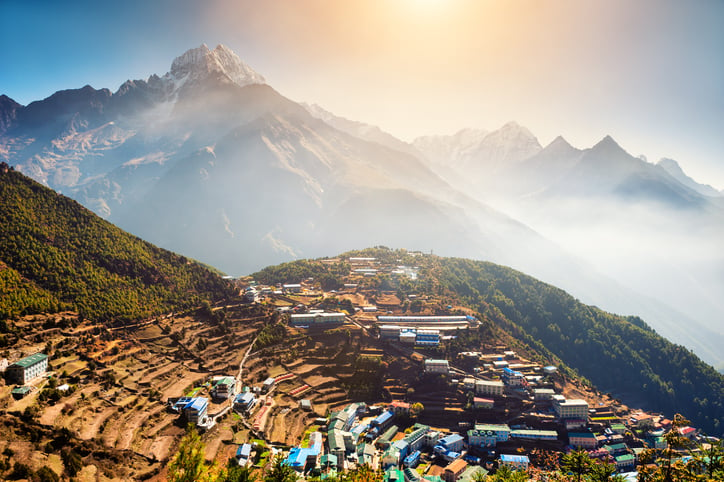
-
Descend to the Dudh Koshi River, where the trail passes through small Sherpa settlements along a lush rhododendron forest. A steep forest climb will take you to Tengboche (3,870m/ 12,649 ft) —home to the largest monastery in the Khumbu region. Once again, you’ll get to enjoy a panoramic view of the highest mountains on Earth. Rare flora and fauna can be spotted in the forest surrounding the monastery. Spend the night in Tengboche.
Trekking: 4-5 hours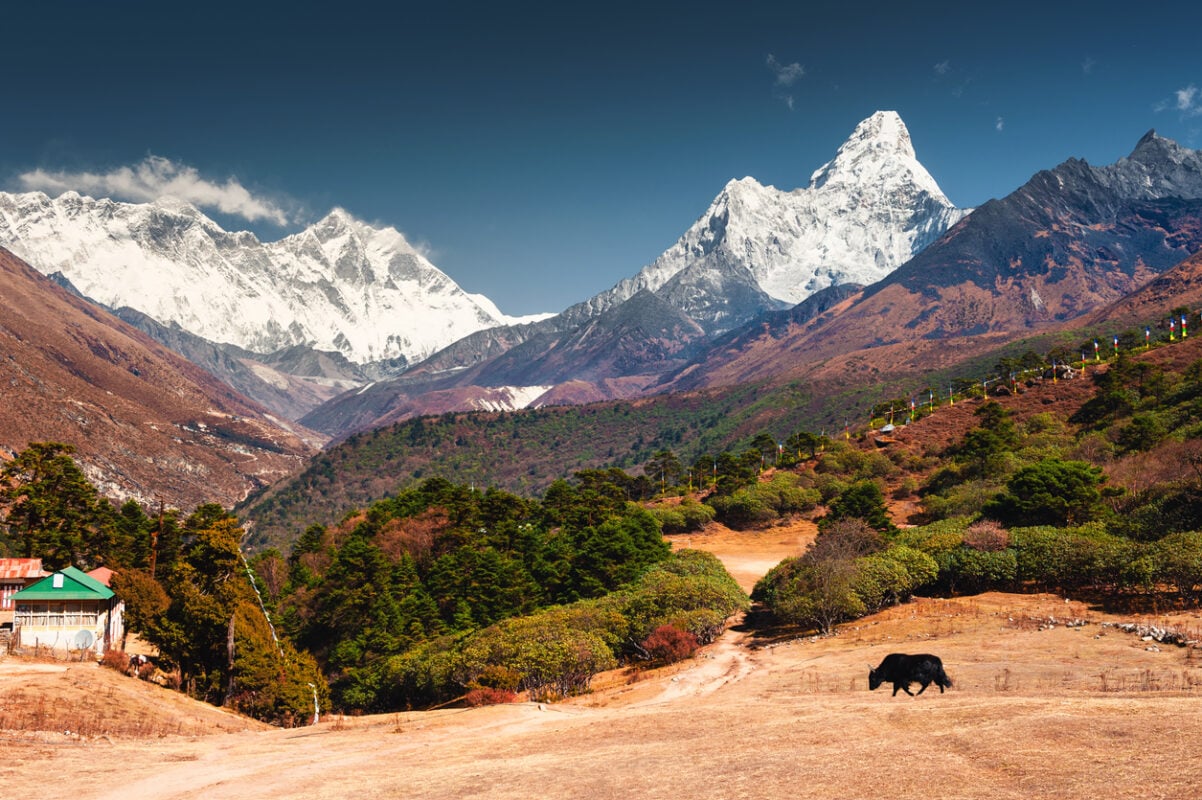
-
Descending through the forests to Debuche, cross the wooden bridge over the Imja River. Keep trekking uphill to Pangboche, which will reward you with views of the giant Himalayas. Enjoy some downtime and explore the Pangboche monastery. Ascending the Imja Valley, stop for a lunch break at Somare. After that, keep hiking to Dingboche (4,360m/ 14,300 ft), crossing a wooden bridge over the Khumbu Khola along the way. Dingboche is your home for the night.
Trekking: 5-6 hours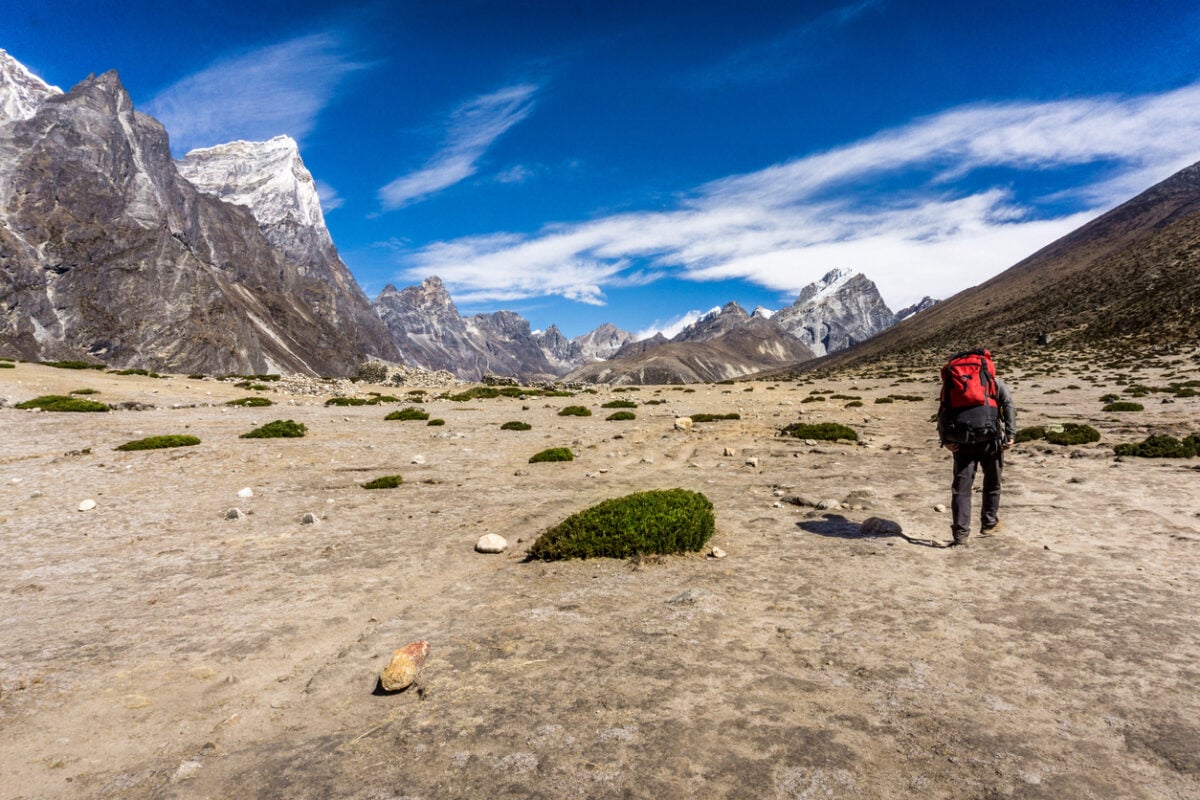
-
Spend the day acclimatizing at Dingboche, a beautiful village with a wide variety of mountain vegetation and domestic animals. Hike to Nangkar Tshang, standing at 5,100 meters of altitude. From there, you’ll get to see a number of peaks, such as Taboche, Thamserku, and Ama Dablam. Climb a steep hill and reach the top to score some views of the Imja and Pheriche Valleys. Return to Dingboche and spend the night there.

-
As you head towards Lobuche (4,940m/ 16,207 ft), you’ll pass through the Trekkers Aid Post at Pheriche that provides emergency medical services to trekkers in need. Reach Chupki Lhara, which provides great views of gigantic peaks. Walk down to the moraine of Khumbu Glacier and keep trekking to Lobuche, where you’ll spend the night.
Trekking: 4-5 hours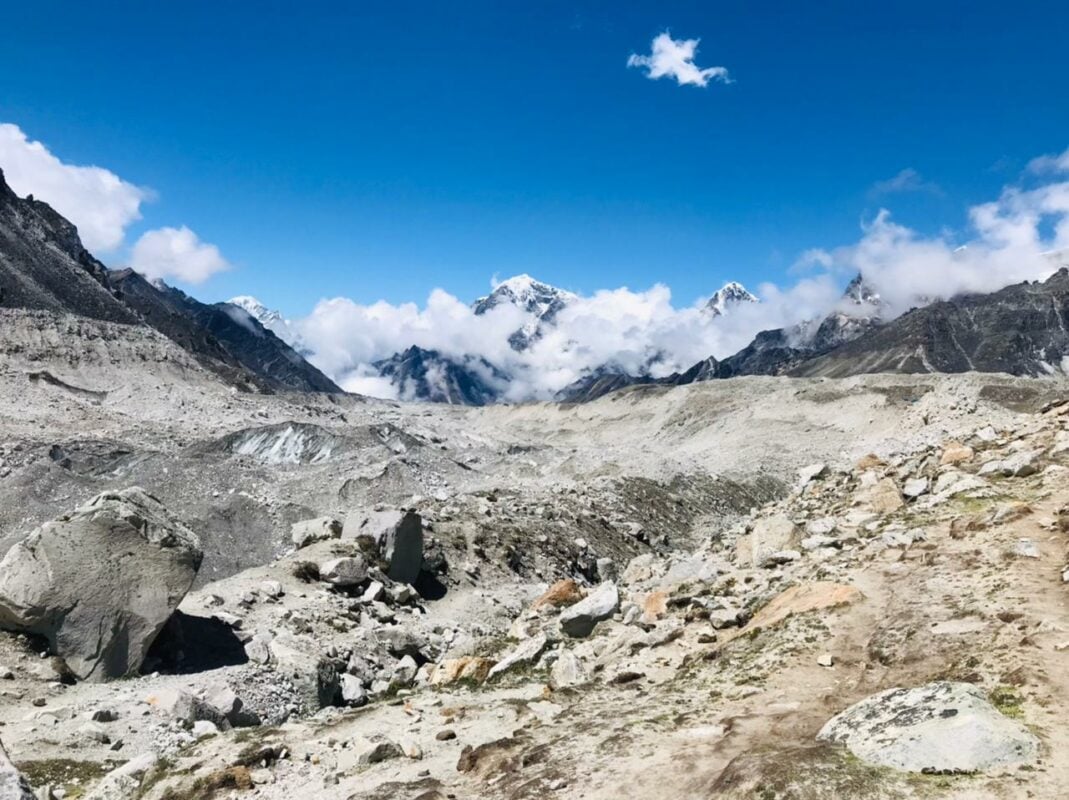
-
Today’s the day! Start the hike following the Khumbu Glacier to Gorakshep (5,164m/ 16,940 ft). As you reach Gorakshep, take a short break and have lunch. From there, the trail runs along the side of the Khumbu Glacier for a couple of hours and finally, you’ll reach Everest Base Camp (5,364m/ 17,594 ft) . Congratulate yourself for reaching the camp and take in the surrounding views of mountain peaks, the Khumbu Glacier, Khumbu icefalls, and colorful tents contrasted against the snow. Return to Gorakshep.
Trekking: 8-9 hours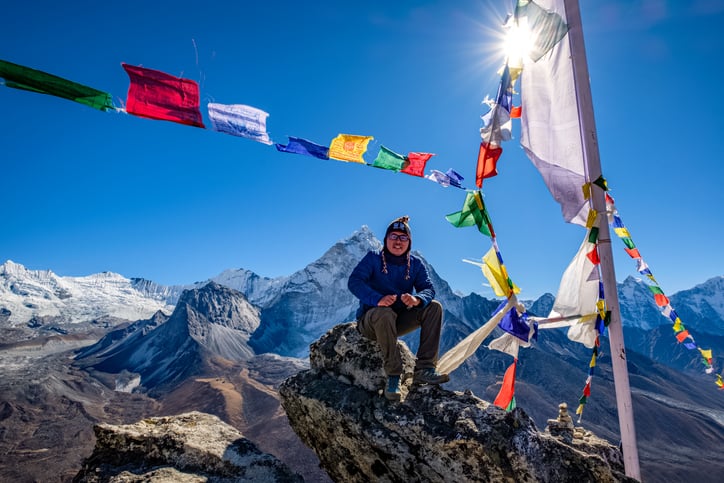
-
Start your hike with a steep climb out of Gorakshep and ascend to Kala Patthar (5,545m/ 18,192 ft), meaning the “black rock”. From the top, you get a panoramic, close-up view of the highest peaks on Earth. Enjoy the sunrise and return to Gorakshep, where you’ll have breakfast. Walk down to Pheriche (4,288m/ 14,070 ft) and spend the night there.
Trekking: 8-9 hours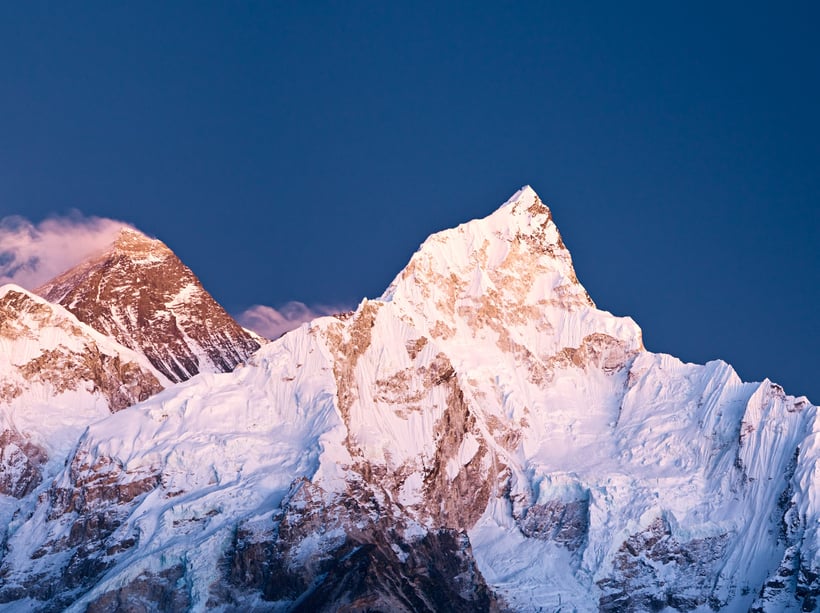
-
Walk down from Pheriche, make it through a short climbing section, and descend to Somare. Follow the Imja Khola Valley down to Pangboche. Trek down to the Imja River and walk through rhododendron and birch forests to Debuche. From there, climb up to Tengboche and have lunch. Trek down to Phunkithanga, cross the Imja River, and climb back up to Kyangjuma. Finally reach Namche Bazaar and spend the night.
Trekking: 6-7 hours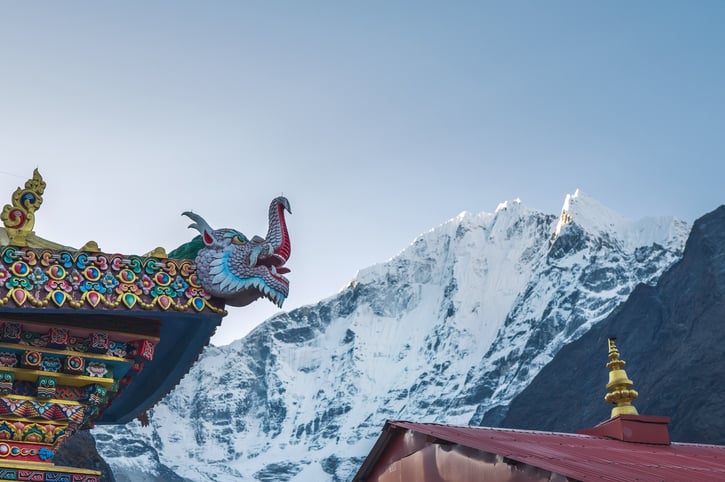
-
Take the rocky downhill trail towards Dudh Koshi River. Head to Lukla (2,800m/ 9,186 ft) by crossing Monjo, where you’ll see prayer flags, mani walls, and chortens. Spend the night at a lodge.
Trekking: 6-7 hours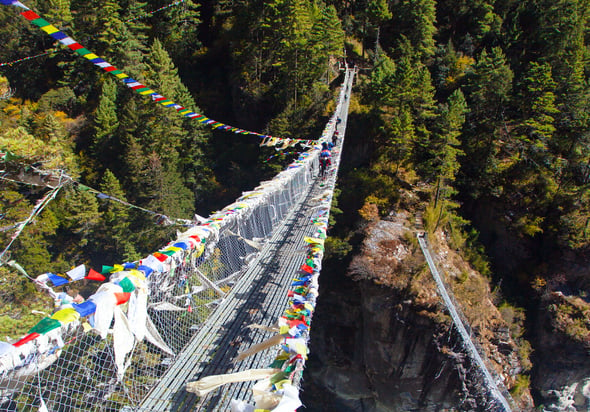
-
Take a flight back to Kathmandu (1,300m/ 4,264 ft). Roam around the city and go to a farewell dinner to celebrate the successful completion of the trek.
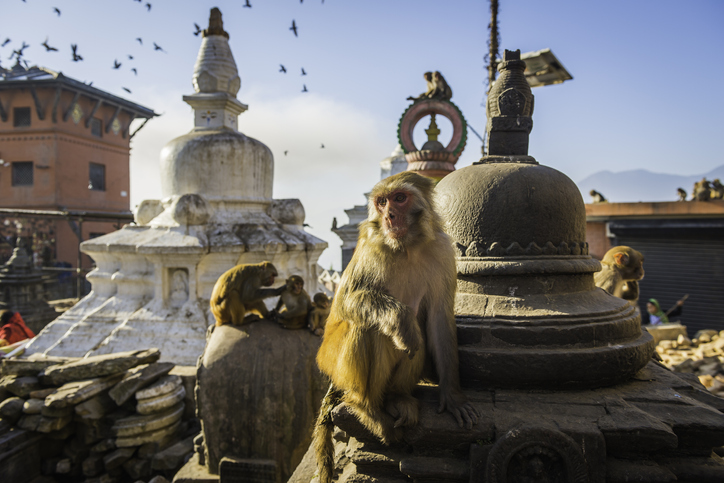
-
Your guides can drop you off at the Tribhuvan International Airport if you wish to go home and get your well-deserved rest. There’s also an option to stay a bit longer in Nepal and choose your next adventure. Just let your guides know to make proper arrangements.
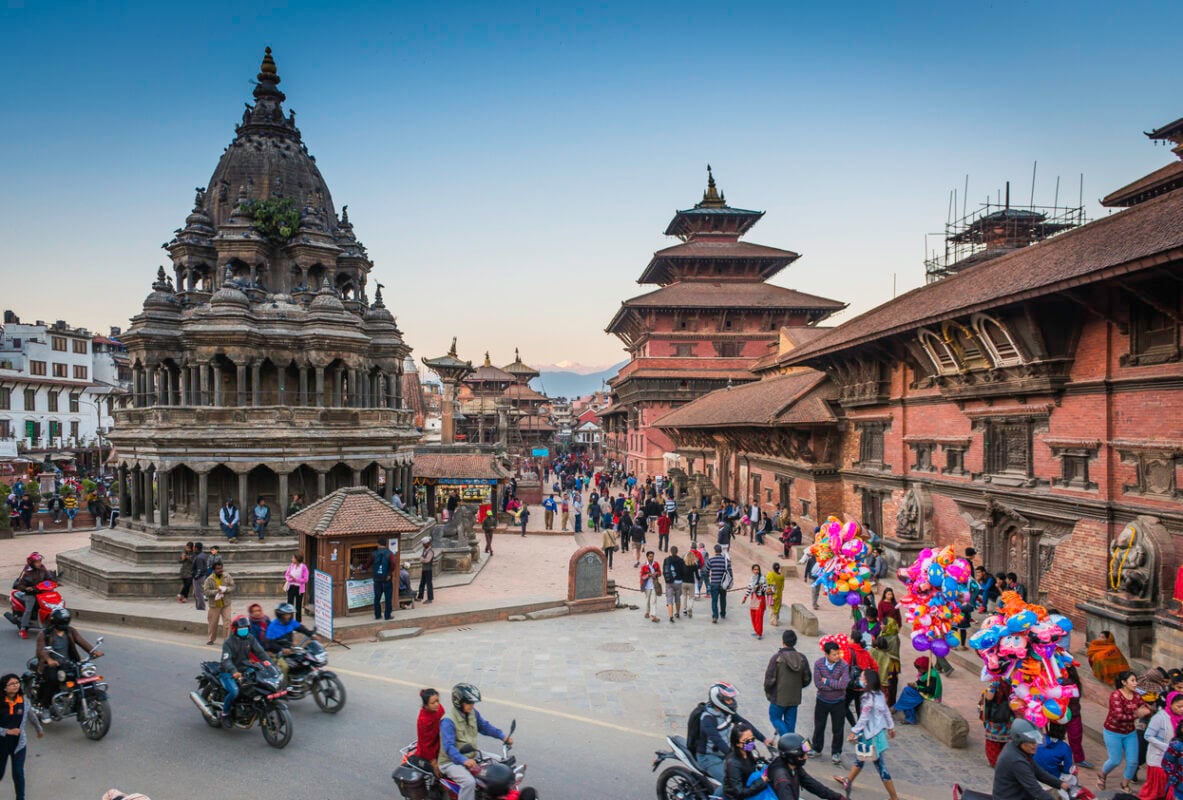
-
-
-
What you get on this adventure:
-
- An experienced, local hiking guide with extensive knowledge of the area
- 15 days of hiking
- Porter for the trek
- Hotel accommodations in the city (3 nights, twin-sharing rooms at Kathmandu)
- Lodging expenses and 5 hot showers (attached bathroom) during the trek
- Breakfast, lunch, dinner, and fresh seasonal fruit after dinner on the trek
- Welcome and farewell dinner with traditional music and dance
- Full-day guided city tour in Kathmandu
- Transportation in a private vehicle
- Airport pickup and drop off
- Kathmandu-Lukla-Kathmandu flight tickets
- Nepal Ascent Treks duffel bag, t-shirt, and trekking map
- 1-hour massage and yoga upon trip completion
- All trekking permits (National Park permit, TIMS)
- Down jackets and sleeping bags (provided upon request)
- First aid medical kit
- Local sim card
What’s not included:
-
- Meals not mentioned above
- Extra porter charge
- Extra hot showers
- Wi-fi and battery charging on the hike
- Any facultative trips
- Nepal arrival visa
- Personal expenses
- Travel insurance which covers emergency rescue and evacuation
-
-
In order to participate in this trek to the Everest Base Camp, you need to be in excellent physical condition as you’ll be hiking for 2 weeks, 3-9 hours per day. During your trekking days, there will be some steeper and more challenging ascents along the way. There will be less arduous days reserved for acclimatization and rest. You’ll be carrying a backpack filled with water and other things you’ll need throughout the day, while the porters carry the group equipment.
Besides its astonishing beauty, the Everest Base Camp Trek is known for its high elevation and diverse terrain. You’ll encounter steep alpine surroundings, scree-covered ridges, pebbly moraines, and wide, flat valleys. This is not an extremely difficult journey, but you’ll need to be in good hiking shape to overcome its challenges.
-
Focus on improving your cardio and strength endurance, and try to get in plenty of practice on rocky, mountainous terrain. Being able to carry a large backpack uphill for extended periods of time is the key to completing your trek.
If you don’t hike regularly on steep terrain, it’s best to start preparing 4 months before the start of the adventure. 3 to 4 hours of aerobic exercise like running, walking, swimming, or cycling per week is the minimum and most will find it beneficial to add some basic strength training to their physical fitness routine. One of the best ways to prepare is to take practice hikes with a daypack roughly the same weight as what you will be taking on the trek. Moving fast is not the end goal, rather endurance is the focus, and will provide a more enjoyable and safe adventure.
-
Here’s a list of the equipment you need to bring:
-
- Backpack large enough to carry your clothes (around a 25-40L bag)
- Duffel bag for the rest of your belongings
- Hiking poles — optional
- Water bottle or hydration bladder (2L capacity)
- Sleeping bag (rated to 0 degrees)
- Sleeping pad/mat and liner
- Headlamp or flashlight with spare batteries
- Sunglasses and SPF
- Toiletries (lip balm, hand sanitizer, bug spray, toilet paper, aspirin, band-aids, etc.)
- Notebook and pen — optional
- Camera — optional
Here’s a list of clothes you should bring:
-
- Wind and waterproof jacket with attached hood
- Heavyweight jacket and trouser
- Fleece jacket or pullover
- Lightweight long trousers/pants
- Light thermal inner layers
- T-shirts (preferably sweat soaking)
- Trekking shorts
- Thin, lightweight inner socks
- Thick warm wool hiking socks
- Sun hat or scarf
- Warm fleece hat or light balaclava
- Lightweight thermal gloves
- Waterproof shell mittens/gloves
- Trekking boots
- Camp sandals
-
-
The Everest Base Camp Trek is also known as a teahouse trek. These small wood-and-stone structures provide trekkers with food and lodging throughout the journey and represent an essential part of the Everest experience. Usually located in or near Sherpa villages, teahouses consist of a kitchen, communal dining hall, bedrooms, and a bathroom. As local, family-run businesses they are the most convenient and affordable option for travelers in the Everest region.
-
Group sizes and prices:
-
- For this adventure, the usual client-to-guide ratio is 5:1.
- It takes a minimum of 2 people for the tour to operate. Maximum group size is 12 people. The cost does not decrease as the group grows.
Hiking the Everest Base Camp Trek can be arranged for larger groups. Contact us to make arrangements.
Min. age requirements:
-
- If you are older than 18, you’re good to go.
- Minors younger than 18 may be permitted to join the hike on a case-by-case basis, but must be in the presence of a parent or legal guardian.
If your group has hikers under the age of 18, contact us prior to booking to make arrangements.
-
-
Apart from the fact that you’ll have a knowledgeable person by your side—who’ll also make sure you have the best time in the country—trekking in Nepal is no longer allowed without a guide. This decision has been made for the tourists’ benefit, as many tourists have gone missing over the past few years when they went trekking by themselves.
-
To get to your Everest Base Camp Trek adventure, most people fly into Tribhuvan International Airport. Your guides will come pick you up and take you to Kathmandu, Nepal’s capital city.
Once you’ve arrived to Kathmandu, your guide will suggest the best place to meet—most likely, it will be the hotel you’re staying at or a restaurant at which you’ll have your welcome dinner. You’ll go through a briefing about the trip and prepare for the adventure ahead.
-
Being one of the most sought-after adventure destinations in the world inevitably has its drawbacks. Due to overcrowding and lack of hiking etiquette, Mount Everest is also known as the world’s highest junkyard. In an effort to reduce the large amounts of trash left by tourists, Nepalese authorities have banned the use of single-use plastics in the Everest region. Let’s strive to be responsible hikers and preserve the great outdoors for generations to come by following the seven principles of Leave No Trace. Additionally, be sure to always let animals pass on the outside of the trail and make way for porters going up and down the trail.
-
57hours is committed to providing safe outdoor adventure experiences. We require all guides using our platform to have a COVID-19 safety plan and to make the details of that plan accessible to travelers. In most cases, group sizes will be reduced, guides will avoid overcrowded locations, and other safety measures will be met depending on the location and activity.
We also expect clients to respect local regulations and take measures to protect themselves, guides and the communities they’re travelling to. For more information on COVID-19 measures for the Everest Base Camp Trek in Nepal, please refer to the US Embassy’s foreign travel advice for Nepal.
Please contact us if you have any questions or require further information. We are happy to provide you with the most up-to-date information!
-
To visit Nepal you must have a Nepalese visa. For the Everest Base Camp Trek, you will need a 30 day multiple-entry visa, which is valid for 6 months and costs 50 USD. You can easily obtain it as soon as you arrive in the country, which is usually at the Tribhuvan International Airport in Kathmandu.
-
